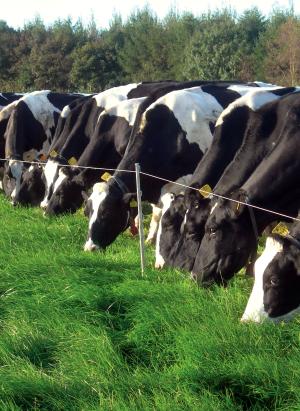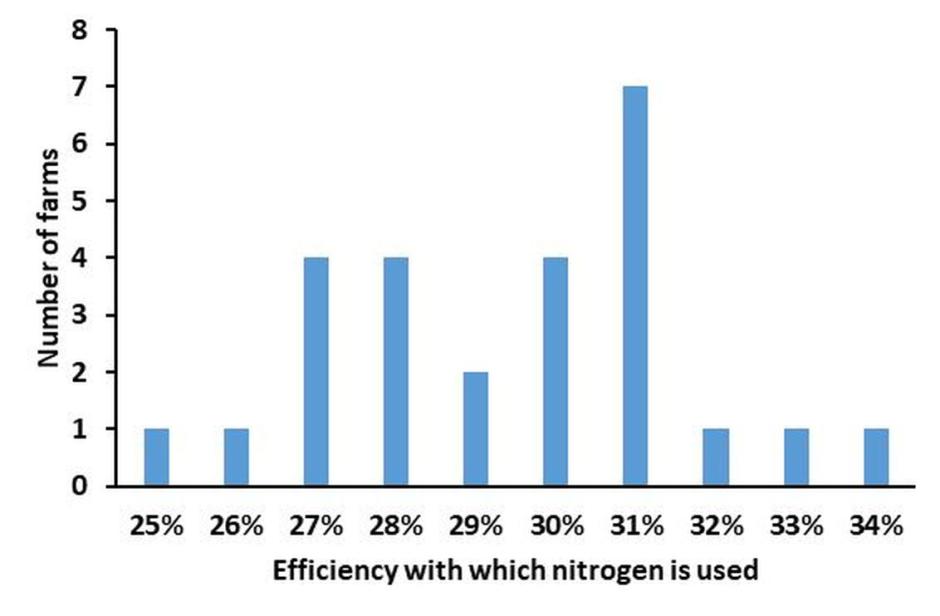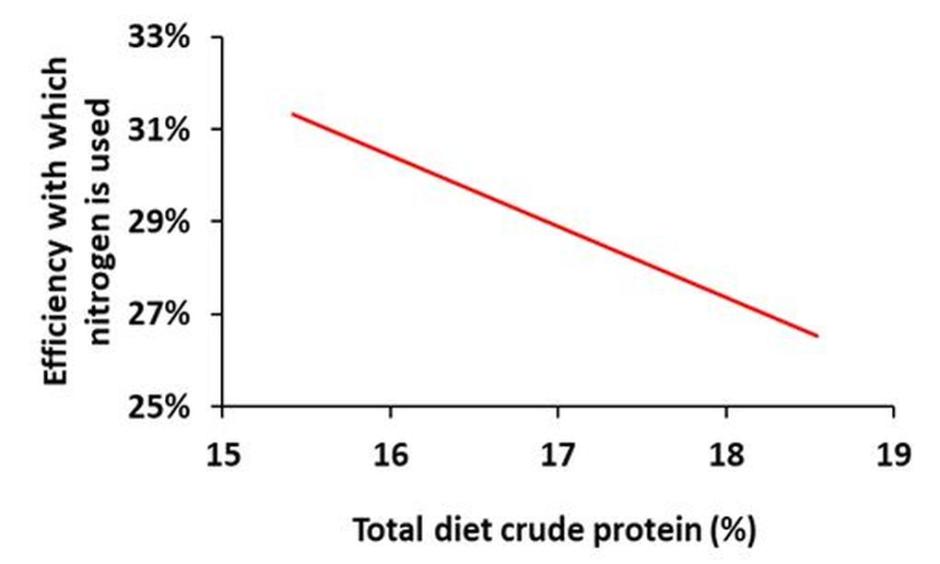Understanding the ‘N’ game - AFBI investigate nitrogen-use-efficiency on local dairy farms
Date published:
Dairy cow diets contain nitrogen, mostly in the form of protein.

Background
The percentage of nitrogen consumed by the cow, and which subsequently ends up in milk protein, is defined as nitrogen-use-efficiency. However, nitrogen-use-efficiency by dairy cows is low, with only approximately 30% of nitrogen consumed being converted into milk protein.
Most of the remaining nitrogen (approximately 70%) is excreted in manure and part of this manure nitrogen can be lost to the environment during housing, manure storage and field spreading. For example, nitrogen in the form of ammonia gas can be deposited on sensitive habitats leading to biodiversity loss and soil acidification. Nitrogen is also lost as nitrous oxide, a potent greenhouse gas which contributes to climate change.
When nitrogen is lost from manure to watercourses via leaching, this can cause nutrient enrichment of waters. Therefore, from an environmental point of view, there is considerable interest in improving the efficiency with which dairy cows utilise nitrogen.
In addition, protein is also the most expensive component of dairy cow diets, so inefficient use of dietary nitrogen represents an economic loss. This study was undertaken to quantify how efficiently dairy cows utilise nitrogen during the housed winter period on commercial dairy farms across Northern Ireland.
The Study
The study, which was funded by DAERA and by AgriSearch through the Research Challenge Fund, was conducted by AFBI on 26 local dairy farms. Participating herds were predominantly Holstein-Friesian with an average annual milk yield and concentrate input of 8,800 kg and 2.9 tonnes per cow, respectively. Each farm was visited 4-5 times during the study period, silages and concentrates being offered were sampled, and detailed information on feeding practices collected. Information on milk production and milk composition was obtained from milk recording organisations. Individual cow dry matter intakes were estimated.
Outcomes
Across the 26 farms there was a wide range of nitrogen-use-efficiencies, from 25% to 34% (Figure 1). The average nitrogen-use-efficiency was 30% which means that approximately 30% of nitrogen consumed by the cows on these farms was converted to milk protein. A nitrogen-use-efficiency of 30% is similar to the average value reported previously in the UK.

Figure 2 demonstrates that as total diet crude protein content increased, the efficiency with which nitrogen was utilised decreased. For example, at a total diet crude protein of 15.5%, approximately 31% of nitrogen consumed was converted to milk protein, meaning that almost 70% of nitrogen was excreted in manure. Meanwhile, with a total diet crude protein level of 18.5%, only 26% of nitrogen consumed was converted to milk protein, so around 74% of nitrogen was excreted in manure. This clearly demonstrates that as the crude protein content of the diet is reduced, nitrogen is used more efficiently, and less nitrogen will be excreted in manure.

Summary:
The efficiency with which dairy cows convert feed nitrogen to milk nitrogen on local farms during the winter is extremely variable, with an average of around 30%. Reducing total diet crude protein content would appear to be one of the key options by which to improve the efficiency with which dairy cows utilise nitrogen for milk production.
However, as farmers seek to move to lower protein diets it is important that account is taken of the composition of the forages available on the farm, and that diets are formulated to meet the cow’s metabolisable protein and energy requirements. AFBI’s research into low protein diets is designed to provide practical answers on how to reduce diet protein levels.
Notes to editors:
AFBI’s Vision is “Scientific excellence delivering impactful and sustainable outcomes for society, economy and the natural environment”.AFBI’s Purpose is “To deliver trusted, independent research, statutory and surveillance science and expert advice that addresses local and global challenges, informs government policy and industry decision making, and underpins a sustainable agri-food industry and the natural and marine environments”.AFBI’s core areas:Leading improvements in the agri-food industry.Protecting animal, plant and human health.Enhancing the natural and marine environment.